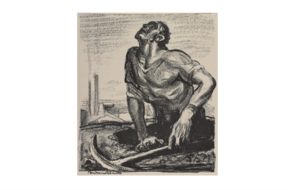
Persuasive Writing: A Letter to a Newspaper for a Caring Community
Language
English — UKPublished
Overview
About this GCSE Supplement
This optional GCSE supplement gives students the opportunity to link the content of An Inspector Calls to modern society and current issues, whilst at the same time preparing students for the English Language GCSE. The activities and tasks outlined below, in which students craft a letter to a local newspaper, allow them to make connections across texts and to their own lives in order to develop their persuasive writing skills and voices.
This GCSE supplement is not a lesson, and does not need to be taught as such. It is structured in such a way as to ensure that the various steps necessary for writing an effective persuasive letter are outlined in an appropriate order:
- Engage with a stimulus (most of this step was completed in Lesson 21: What Lessons Can We Learn?)
- Develop claims and content
- Read a model letter
- Plan and write the letter
- Respond to feedback and redraft
You may decide that your class do not need to follow all of the steps, or that you want your students to do some of the steps in class and others at home. Engage with the supplement in the way that works for your classroom context, adapting it to your students’ needs as you see fit.
This GCSE supplement builds on the work done in Lesson 21: What Lessons Can We Learn?, in which students discussed the unit’s essential question: What can J. B. Priestley’s An Inspector Calls teach us about the impact of our individual and collective decisions and actions on others? Students considered the lessons that they learnt from reading the play, sharing their ideas in a people’s assembly. Now, students will be reflecting on these lessons and developing their ideas into a formal letter about how we can turn our society into a caring community, one in which people consider the needs of others.
Preparing to Teach
A Note to Teachers
Before teaching this GCSE supplement, please review the following information to help guide your preparation process.
Procedures
Suggested Activities and Steps
Materials and Downloads
Quick Downloads
Download the Files
Get Files Via Google
Persuasive Writing: A Letter to a Newspaper for a Caring Community
What Lessons Can We Learn?
Recurring Themes in the Play
Unlimited Access to Learning. More Added Every Month.
Facing History & Ourselves is designed for educators who want to help students explore identity, think critically, grow emotionally, act ethically, and participate in civic life. It’s hard work, so we’ve developed some go-to professional learning opportunities to help you along the way.
Exploring ELA Text Selection with Julia Torres
On-Demand

Working for Justice, Equity and Civic Agency in Our Schools: A Conversation with Clint Smith
On-Demand

Centering Student Voices to Build Community and Agency
On-Demand




















